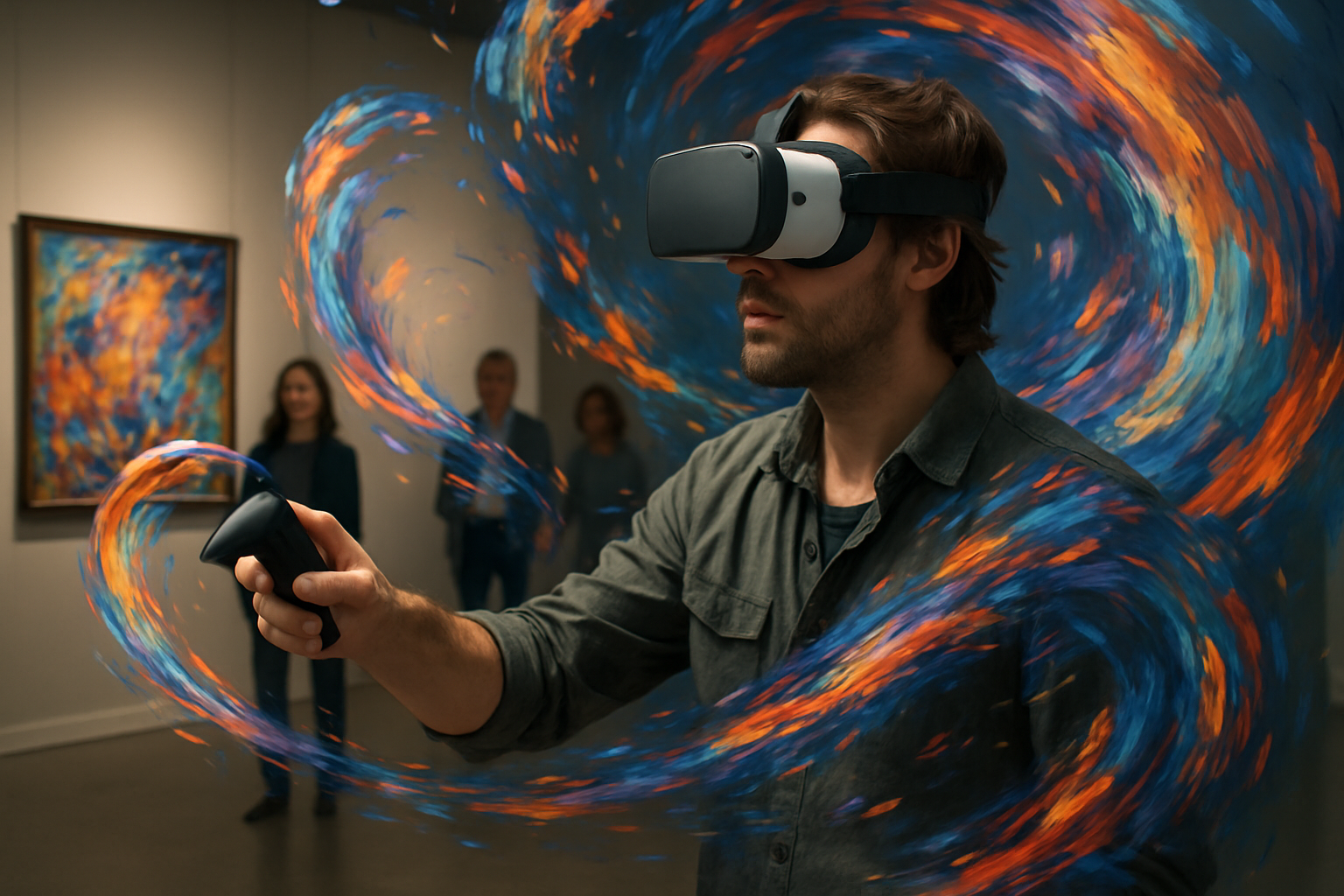Augmented Reality's Artistic Renaissance
In the ever-evolving landscape of digital art, a groundbreaking movement is taking shape, blurring the lines between the physical and virtual realms. Augmented Reality (AR) art is emerging as a powerful medium, transforming how we perceive, interact with, and create artistic experiences. This fusion of technology and creativity is not just changing the art world; it's redefining the very essence of artistic expression in the 21st century.

Bridging the Physical and Digital Divide
AR art stands at the intersection of the tangible and the virtual, offering a unique canvas that extends beyond traditional boundaries. Unlike virtual reality, which creates entirely digital environments, AR overlays digital elements onto the physical world, creating a hybrid space where art can exist. This convergence allows artists to manipulate space, time, and perception in ways previously unimaginable, challenging conventional notions of what constitutes an artwork.
The Tools of the Trade
The evolution of AR art has been closely tied to advancements in technology. Early AR artworks relied on QR codes and simple smartphone applications, but today’s artists have access to a sophisticated array of tools. High-end AR headsets, advanced motion tracking, and AI-powered software have expanded the possibilities, allowing for more complex and interactive creations. These technological leaps have not only enhanced the viewer’s experience but have also opened up new avenues for artistic expression.
AR in Museums and Galleries
The integration of AR into traditional art spaces has been nothing short of revolutionary. Museums and galleries worldwide are embracing this technology to offer visitors enhanced experiences. AR applications allow patrons to delve deeper into artworks, revealing hidden layers, historical context, or even bringing static pieces to life. This digital augmentation is not just a gimmick; it’s transforming how we engage with art, making it more accessible and interactive for diverse audiences.
The Democratization of Art Creation
Perhaps one of the most significant impacts of AR art is its potential to democratize artistic creation and distribution. With accessible AR tools and platforms, artists no longer need physical gallery spaces to showcase their work. Public spaces can be transformed into virtual galleries, and anyone with a smartphone can potentially become both an artist and a curator. This shift is challenging traditional art world hierarchies and opening up new possibilities for emerging artists to gain recognition.
Ethical and Philosophical Implications
As AR art continues to gain prominence, it raises important ethical and philosophical questions about the nature of art itself. Issues of ownership, copyright, and the permanence of digital creations are at the forefront of discussions in the art world. Moreover, the blending of physical and digital realities prompts us to reconsider our relationship with the spaces we inhabit and the very concept of reality in an increasingly digitized world.
The Future of AR Art
Looking ahead, the future of AR art appears boundless. As technology continues to advance, we can expect even more immersive and interactive experiences. The integration of artificial intelligence, haptic feedback, and more sophisticated spatial mapping will likely push the boundaries of what’s possible in AR art. Furthermore, the potential for collaborative, global AR art projects could redefine how we create and experience art collectively.
Challenges and Opportunities
Despite its potential, AR art faces several challenges. Technical limitations, such as battery life and processing power, still constrain the scope of AR experiences. Additionally, there’s the ongoing challenge of making AR art accessible to wider audiences, particularly those who may not have access to the latest technology. However, these challenges also present opportunities for innovation and creativity, driving artists and technologists to find new solutions and push the medium forward.
Conclusion
Augmented Reality art represents a paradigm shift in the world of creative expression. By seamlessly blending the digital and physical worlds, it offers unprecedented possibilities for artists and viewers alike. As we stand on the cusp of this artistic revolution, one thing is clear: AR art is not just a fleeting trend but a transformative force that will continue to shape the future of art and our perception of reality itself. The canvas of the future is no longer confined to a frame; it’s all around us, waiting to be discovered and redefined through the lens of augmented reality.





